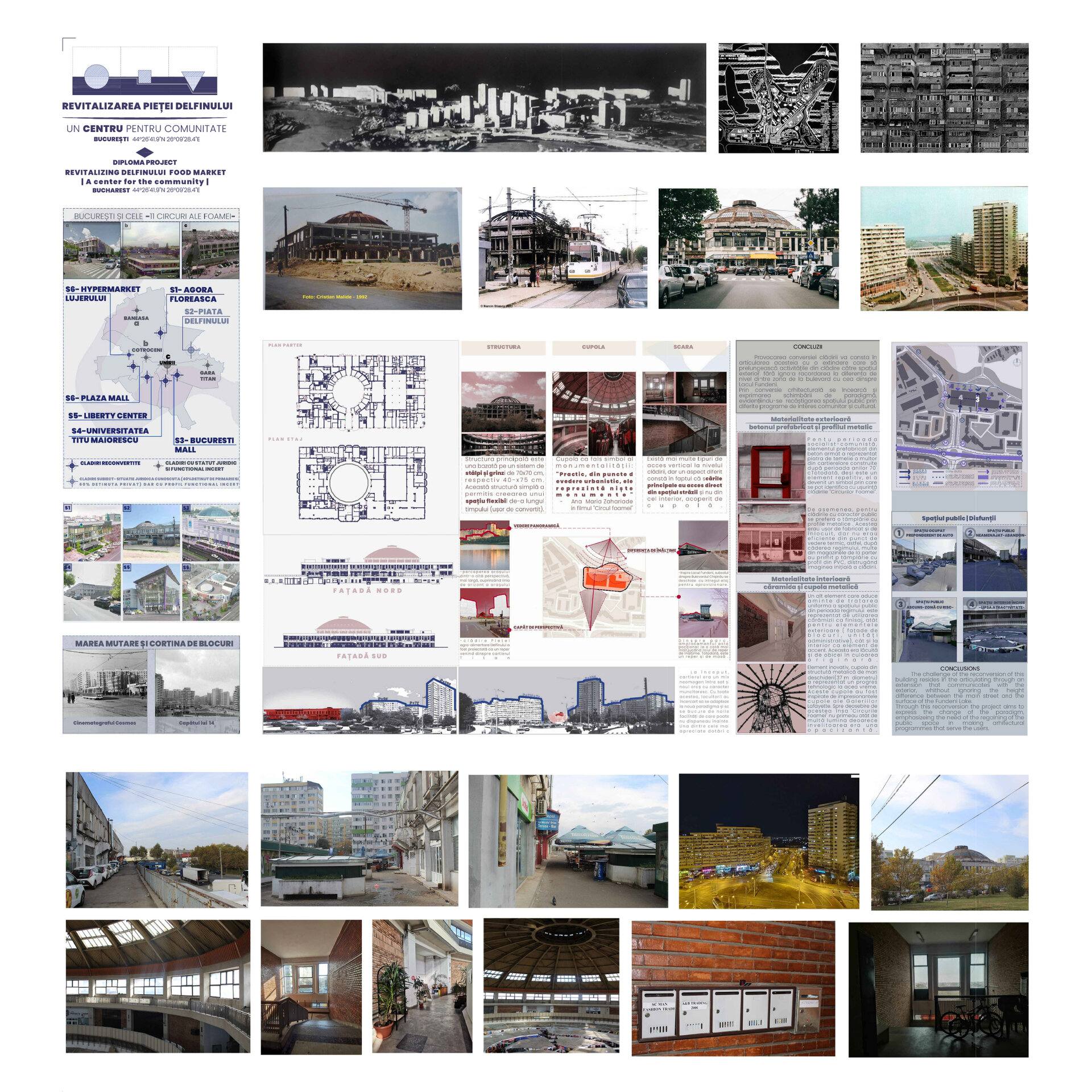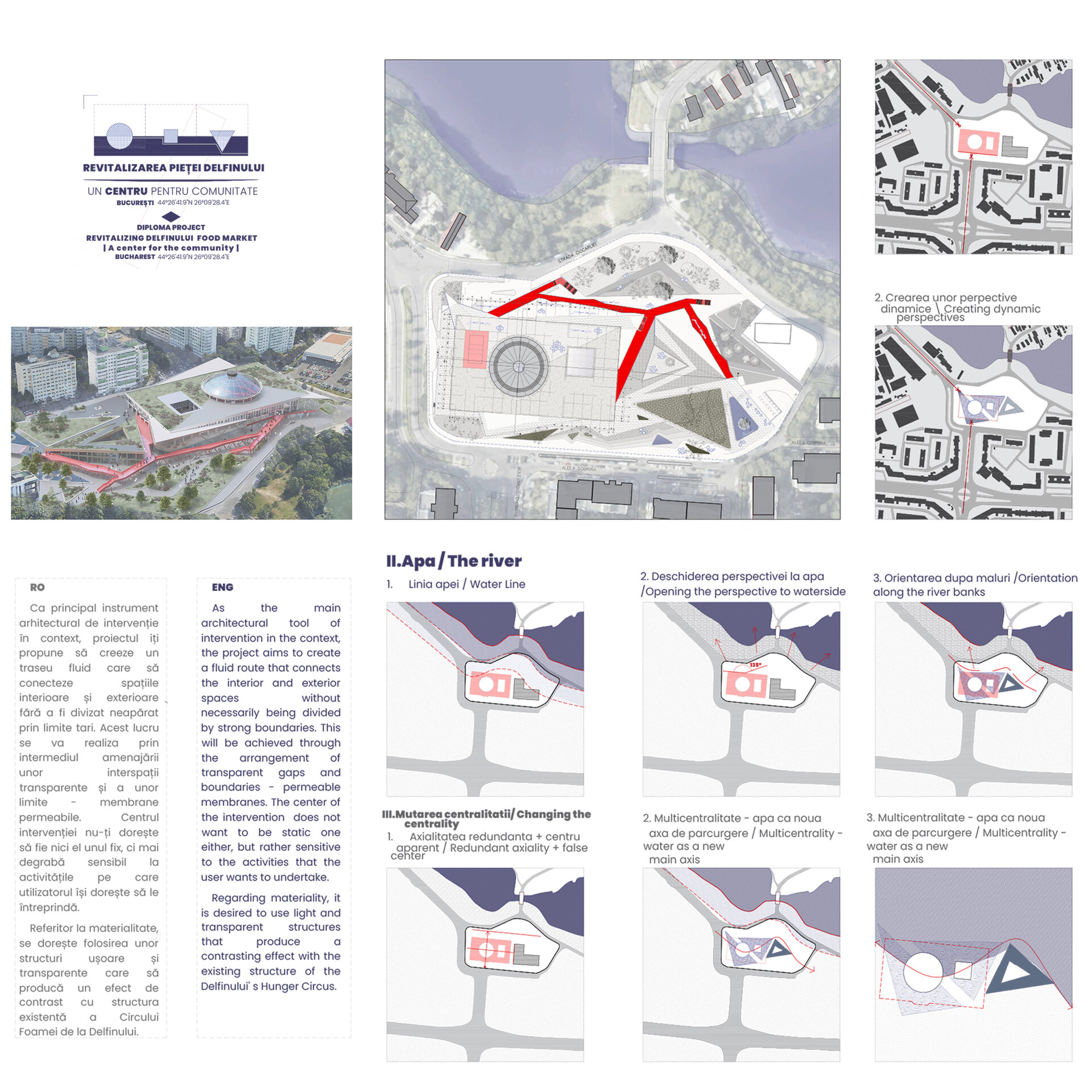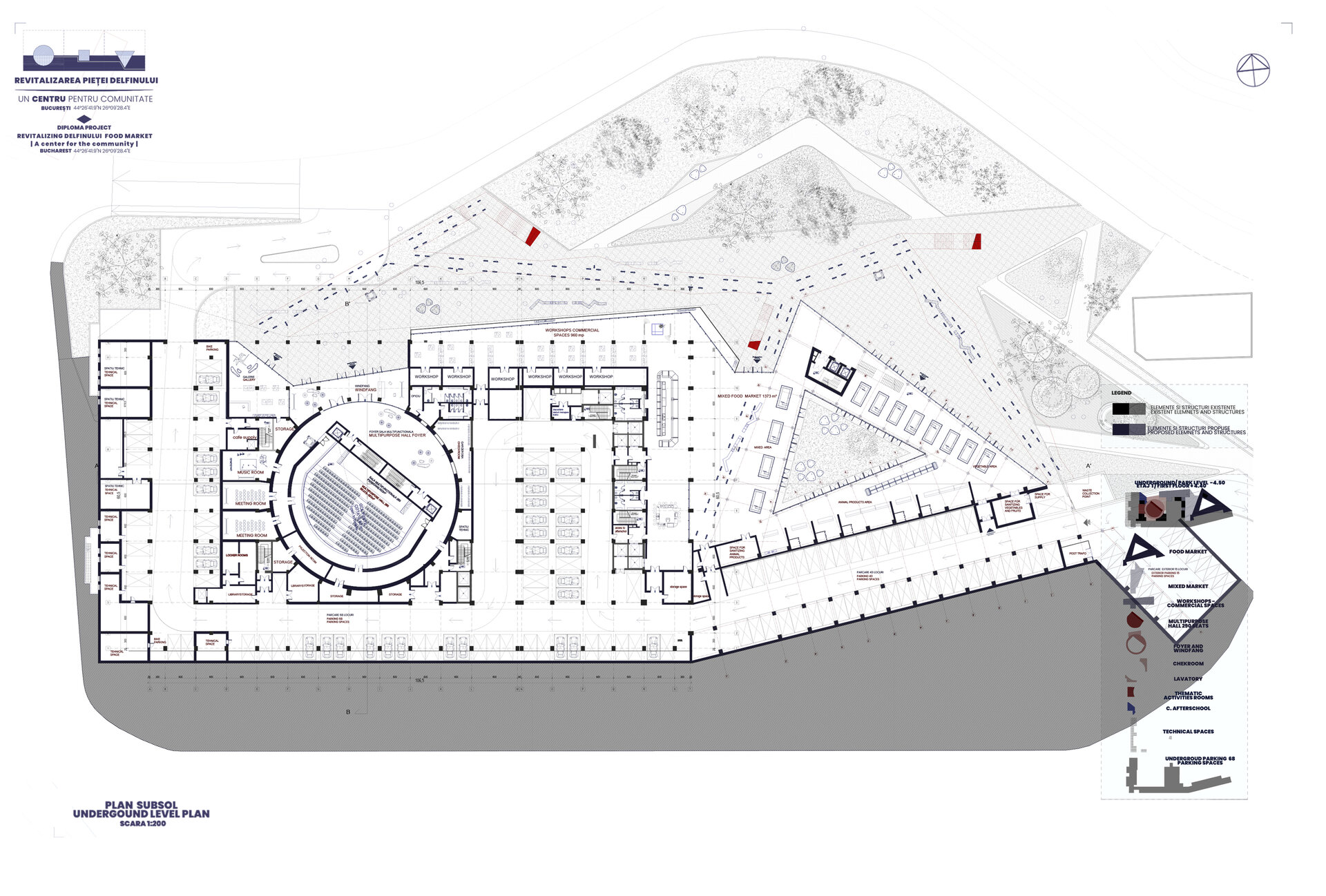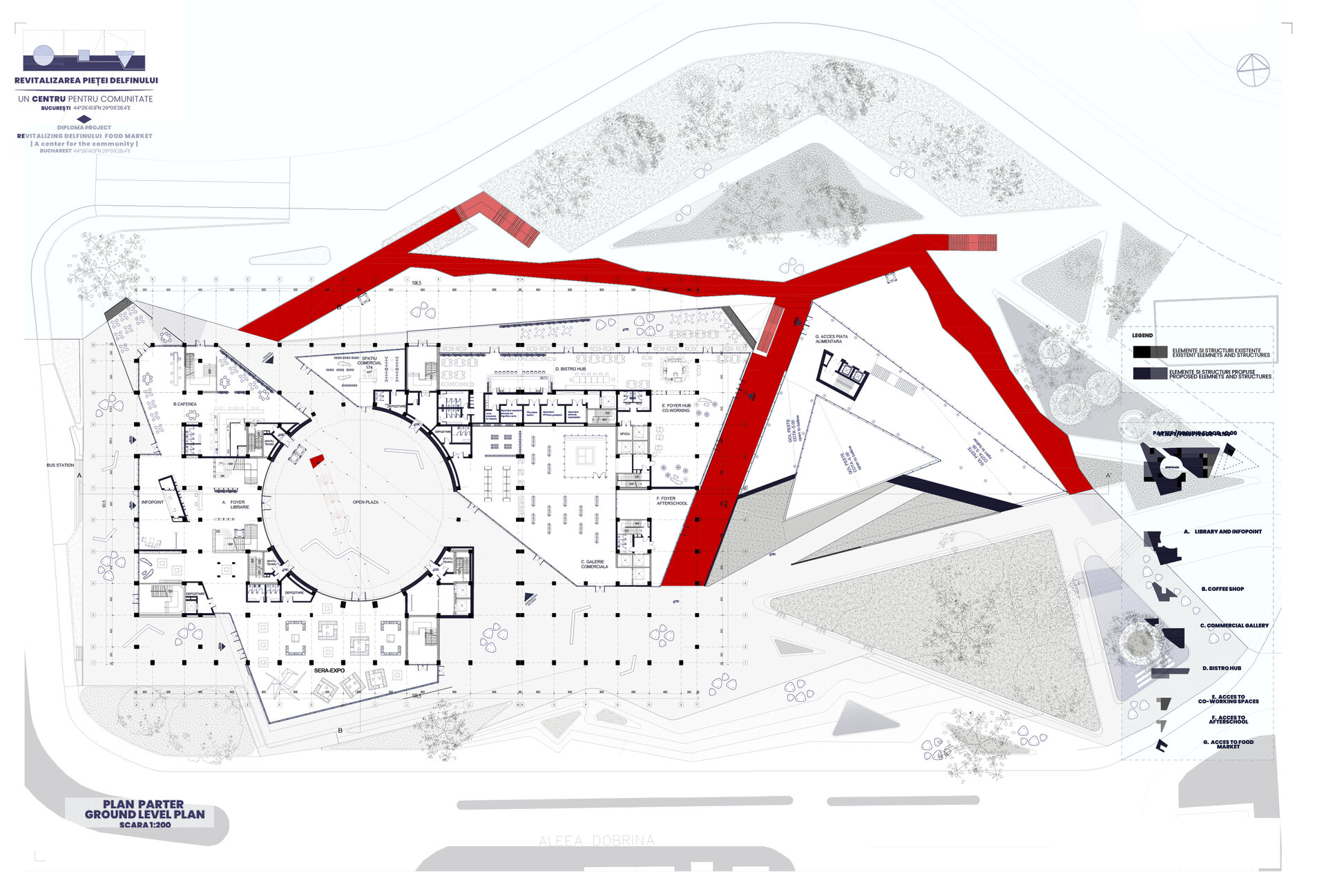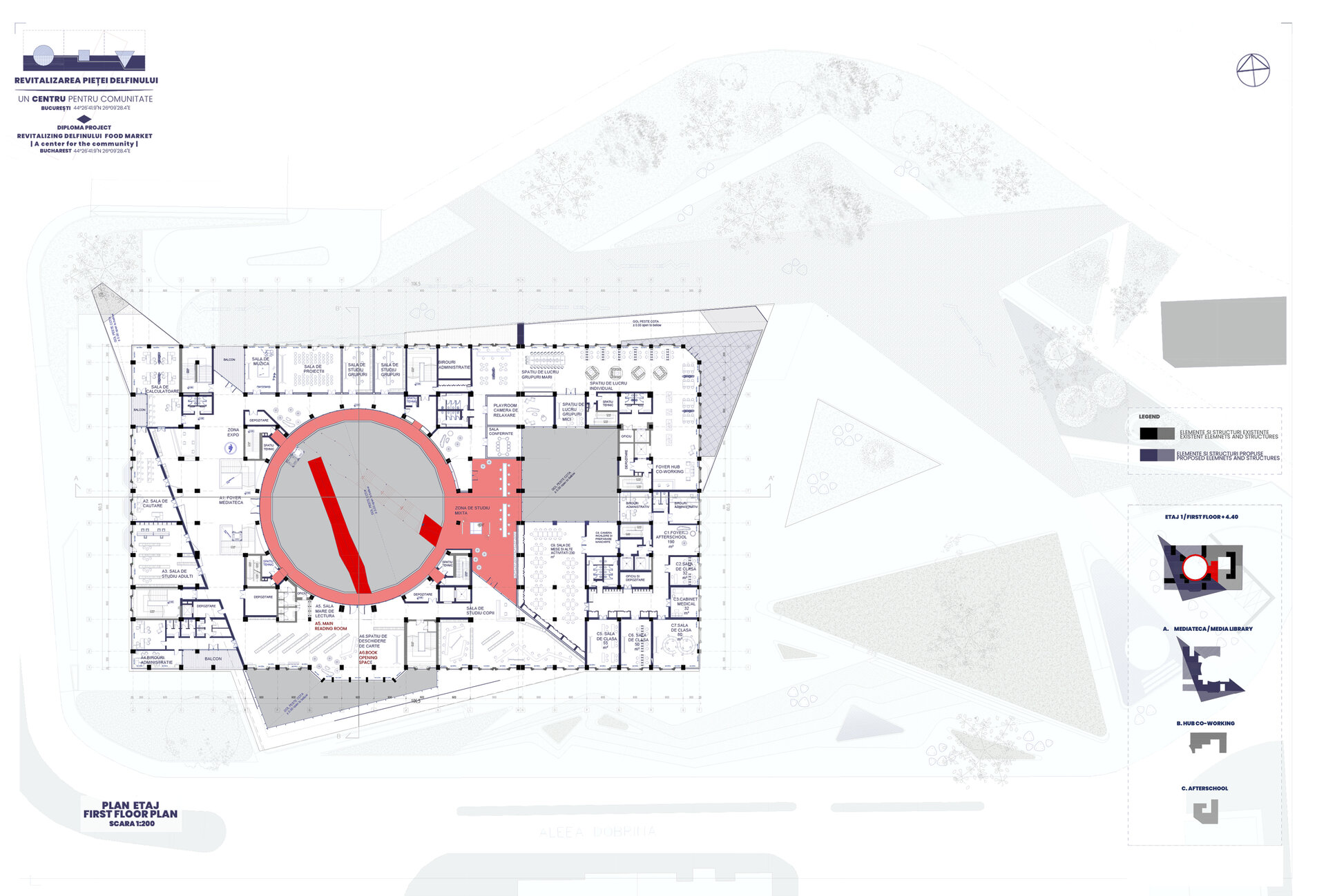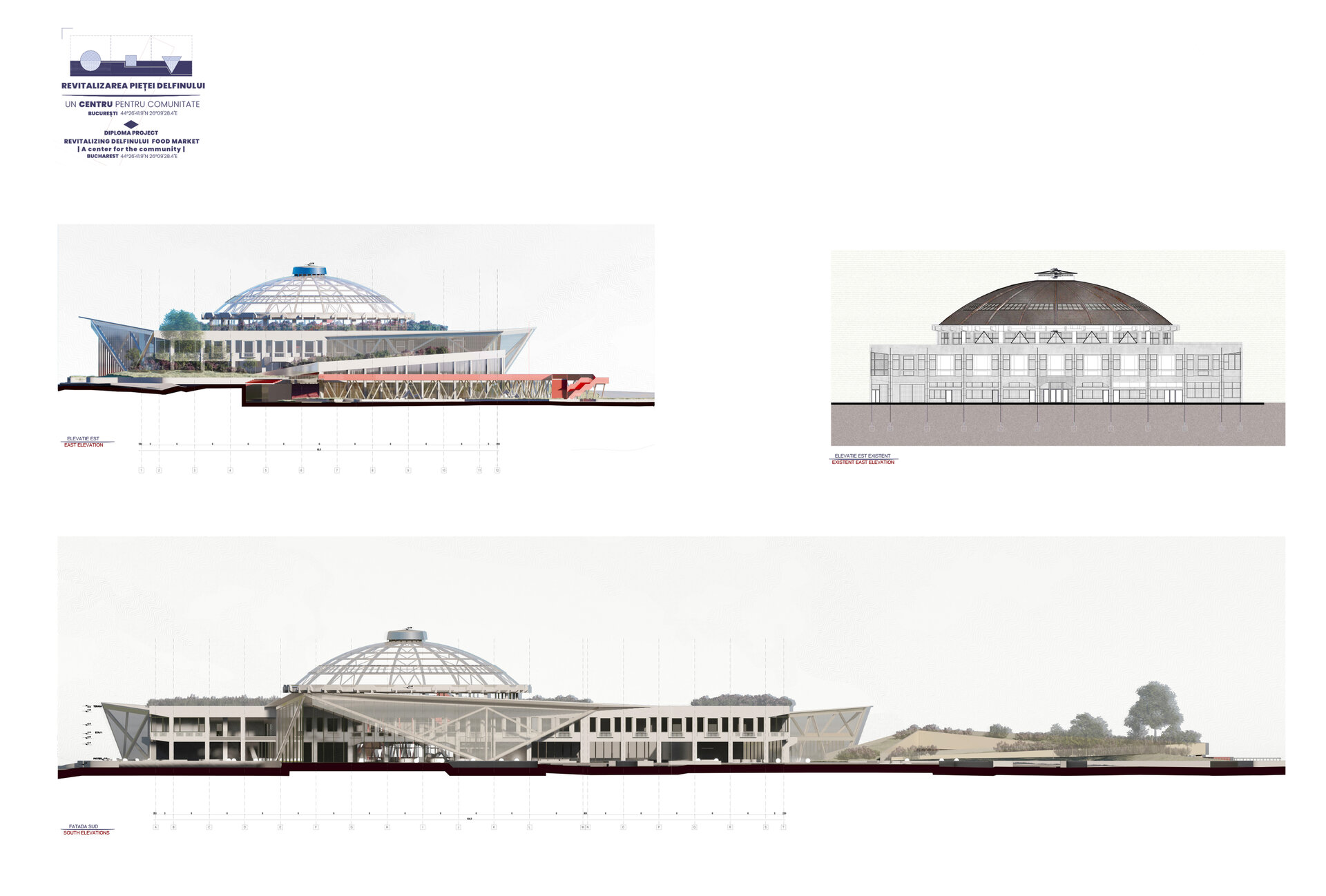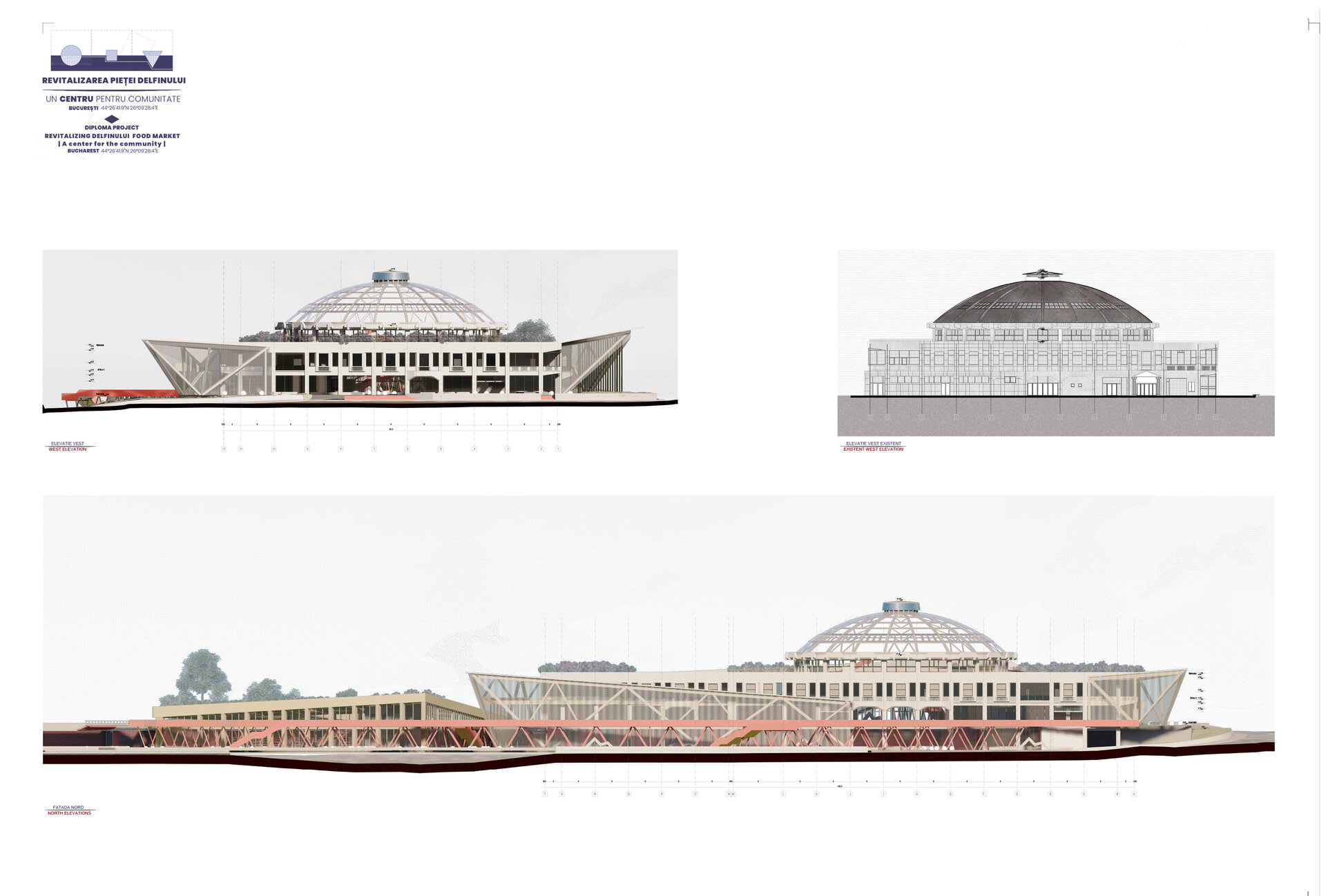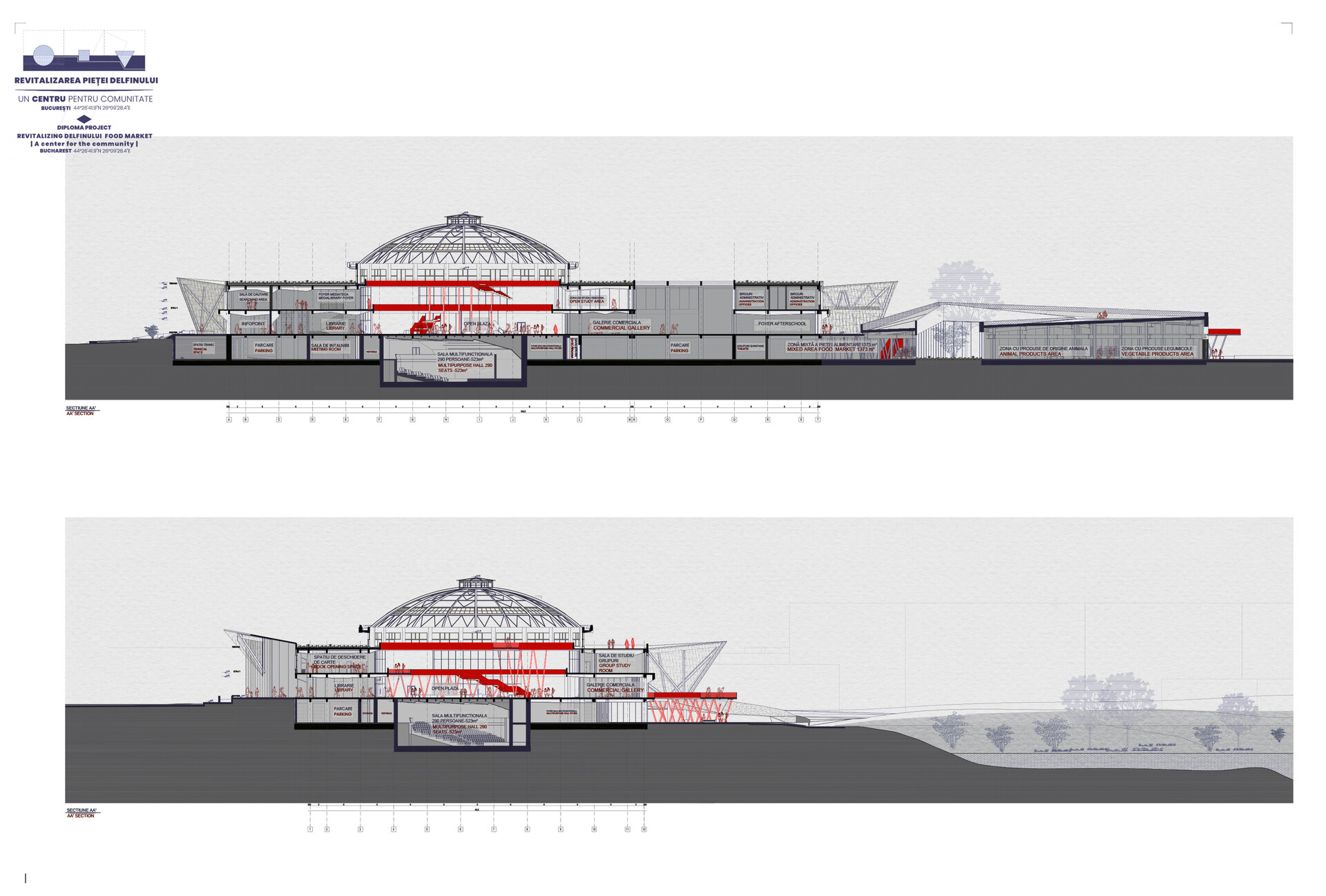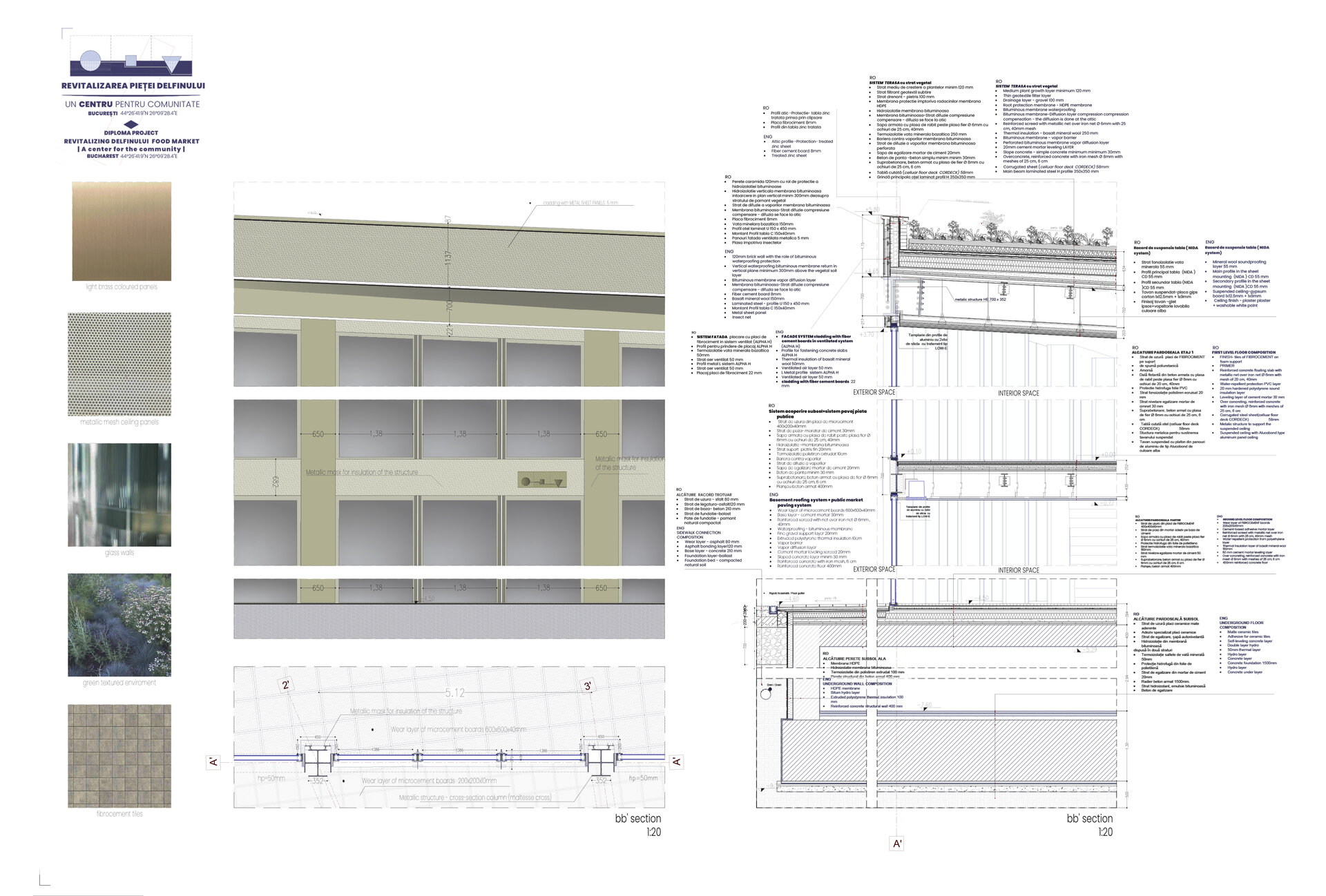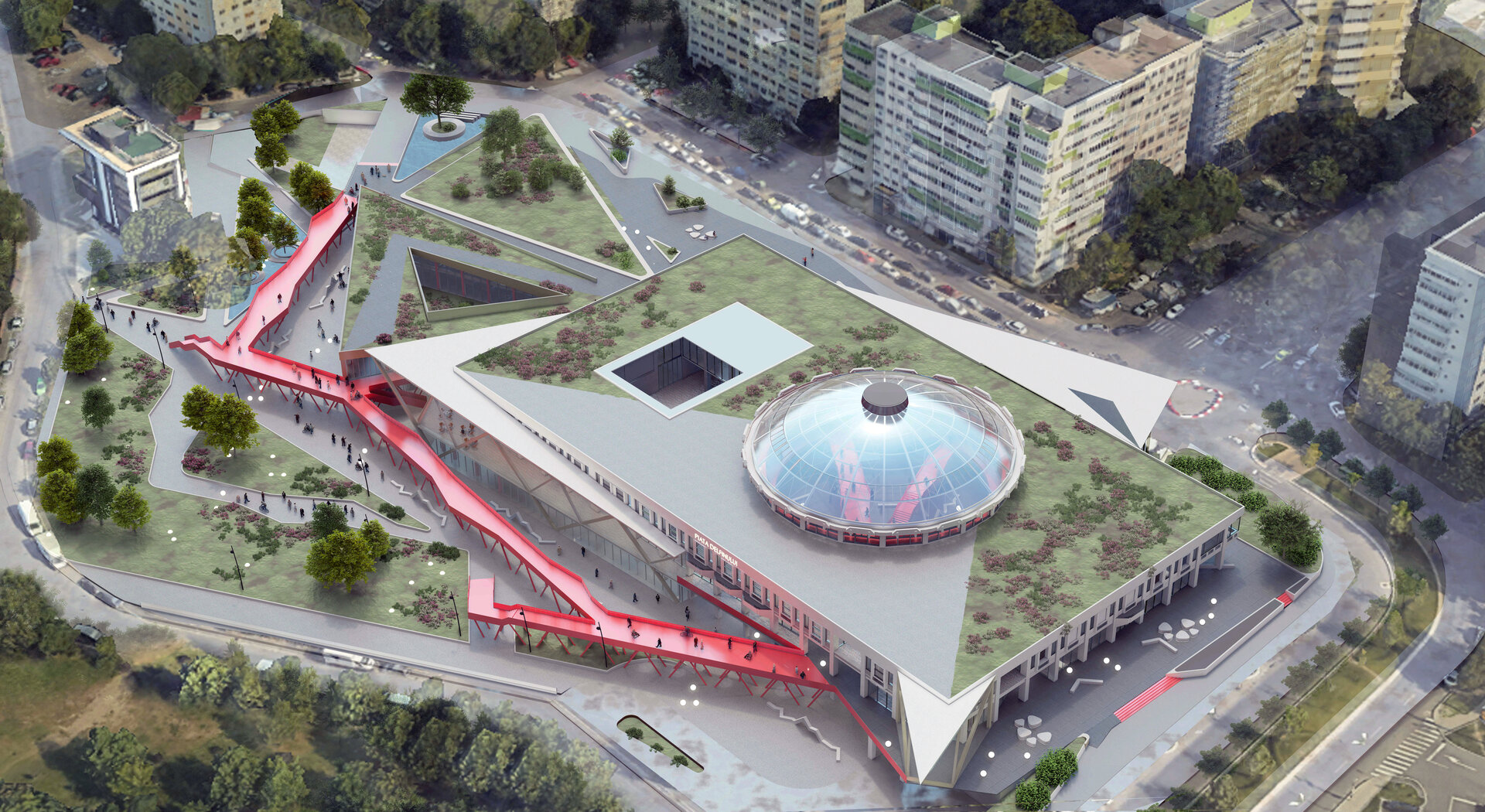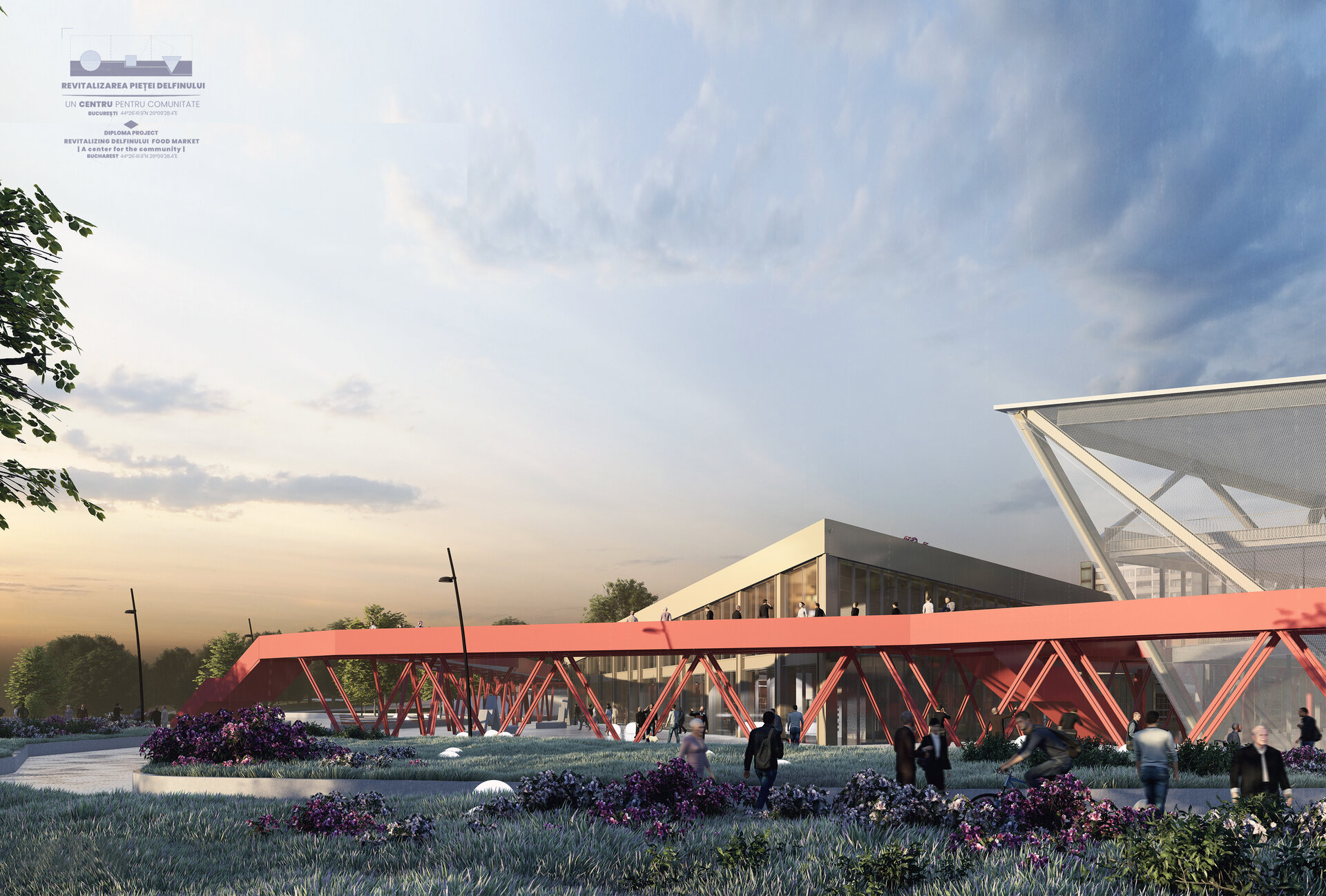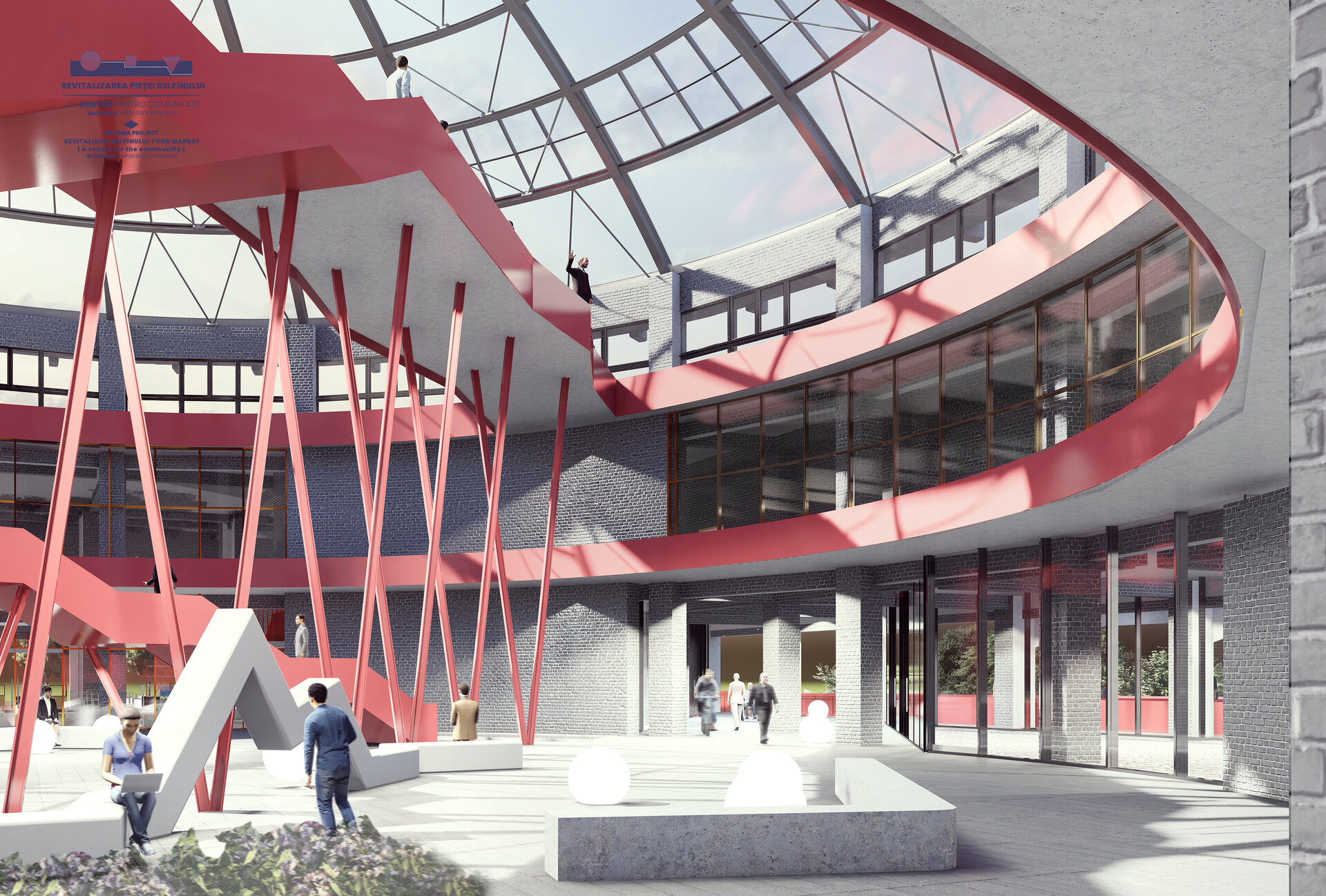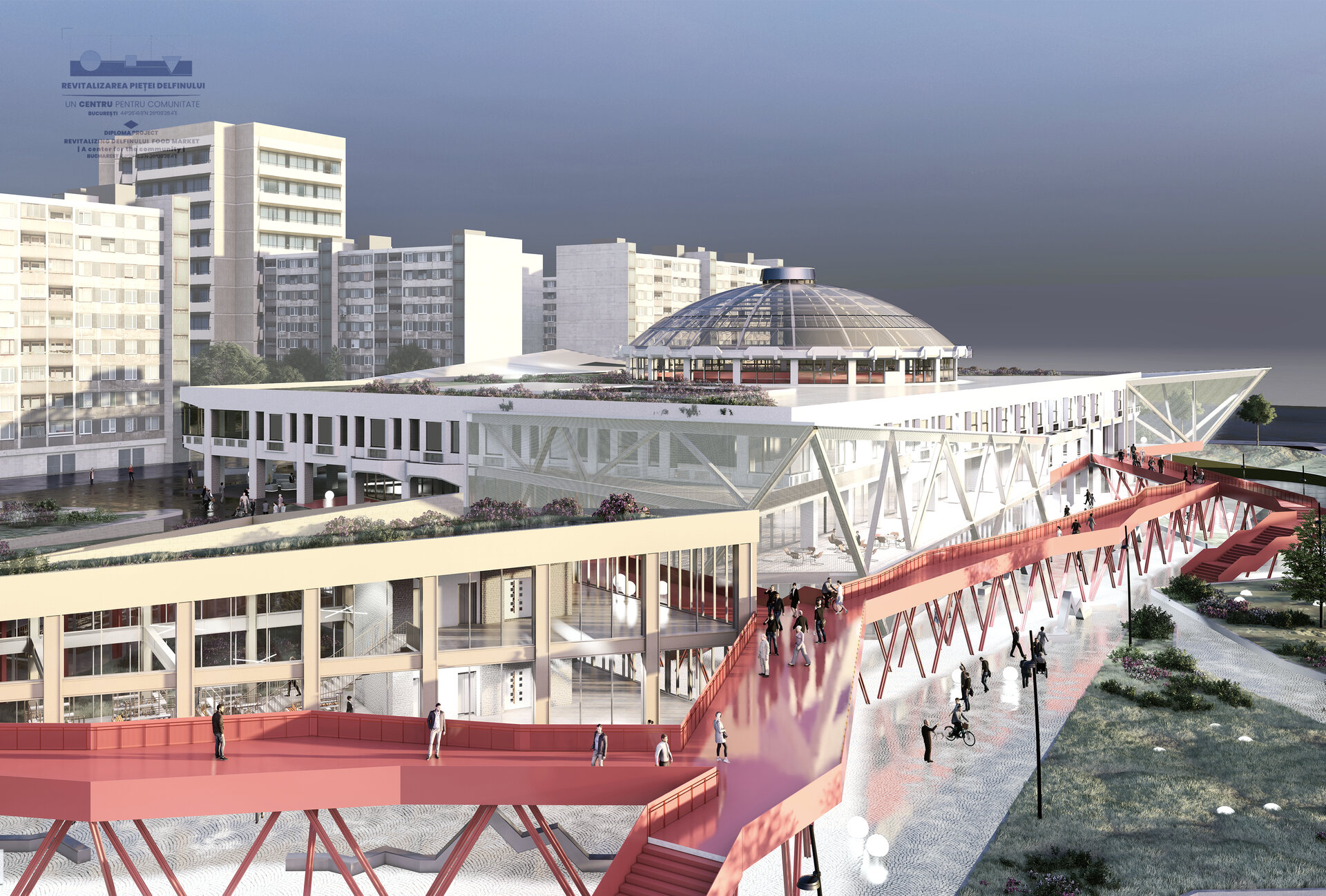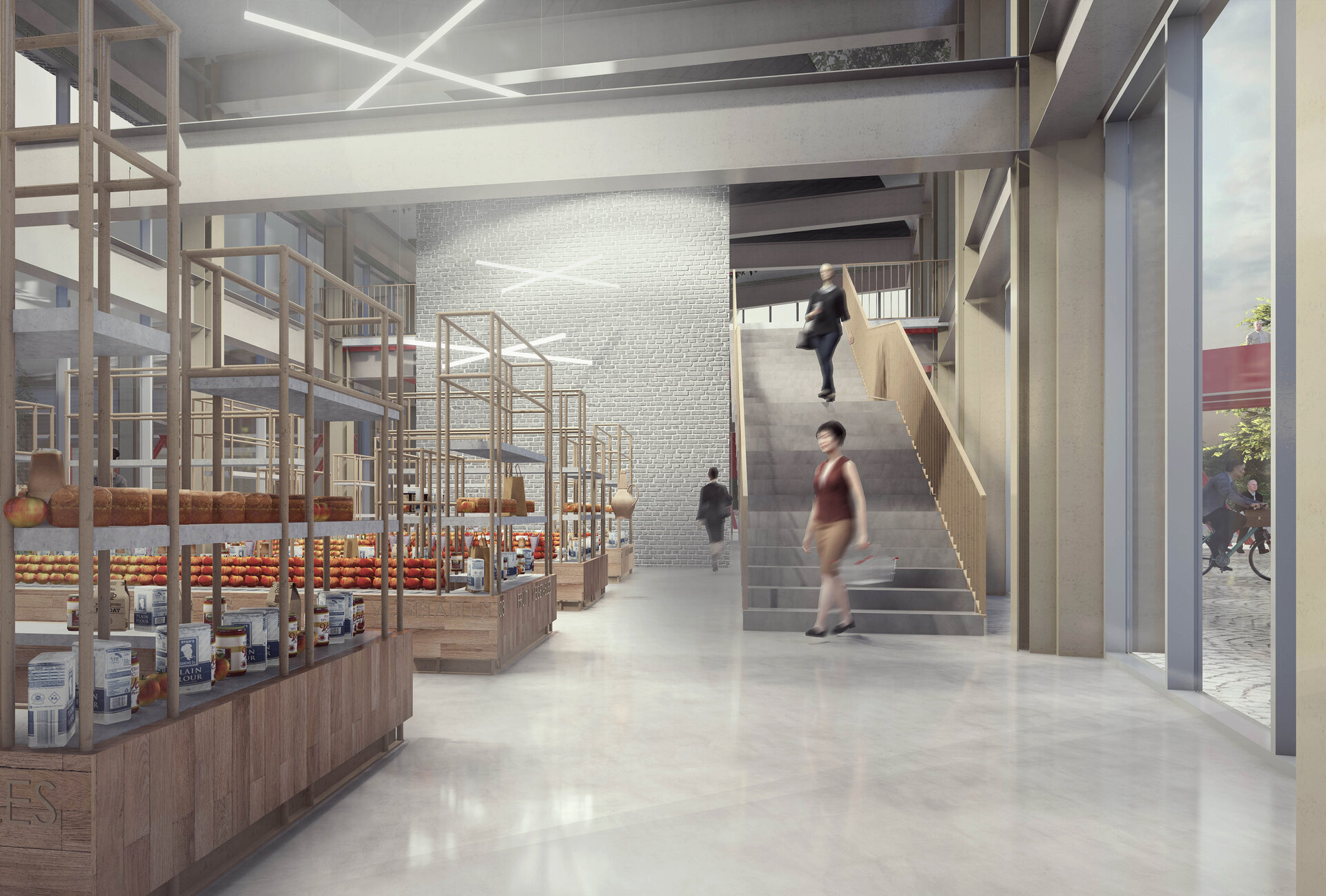
Revitalizing Delfinului Food Market. A center for the community
Authors’ Comment
The diploma project chosen by me aims to question the importance of public space and the previously built fund (whether patrimonial or not) - as a vehicle for the feeling of belonging and collective identity. It plays a vital role in shaping urban character as part of social identity. Currently, Bucharest is facing the need to recompose heterogeneous fragments of tissue and memory in order to create an integrated and complex vision of the new city. I believe that through the built context of the Pantelimon neighborhood as well as the controversial history behind the Hunger Circuses, a project can be realized that aims to (re) articulate active communities. The need to revitalize these spaces and give them sensitive uses to the needs of the place and its inhabitants has also been attested by numerous recent works and studies. Their revaluation and transformation into points of interest that include leisure activities, culture or informal trade has as consequences both an economic growth and the generation of a cultural life, as well as the change of perception at the level of the inhabitants. Consequently, the present project proposes the reconsideration of the Hunger Circus from Delfinului Square as a ruin of the communist period architecture, a ruin that can be re-activated in order to create a neighborhood center of the community that includes the already existing market function. Through the flexibility of the space and its location compared to Lake Fundeni, it could respond to the legitimate needs of the inhabitants regarding an adequate public space, able to offer interaction, socio-cultural activities and thus help to coagulate closer communities. The project proposes the scenario of the co-presence between the functionally obsolete structure of the Delfinului Market, the new necessary social-cultural program. Also, the modernization of the existing agri-food market is being taken into consideration as well is its integration in a route that connects the facilities at the site level.
In short, the ground floor area includes as main spaces: Media library (with access area, search area, computer\audio\video projector room), Commercial spaces and access areas for the co-working and afterschool spaces on the first floor. The underground level opens through a new connection with the agri-food market. It comprises numerous shop-style workshops and a place for a temporary market. Moreover, also at the underground level, it is proposed to set up a multifunctional room with other adjacent rooms. Additionally, on this level is the underground parking which has the main purpose of removing the cars from the surroundings of the ground floor level. Upstairs, the plan is also occupied by three large functions: the Media library, the co-working spaces and the Afterschool Workshops. The area under the dome is left clear, creating linear connections with the ground floor level. Thus, the intention was to break the original concrete box and to let the new community-oriented functions be as open, visible, permeable as possible.
Last but not least, the visual impact that the intervention will have had from the point of view of the fifth facade was also taken into account. As a result, it was desired to continue the garden from the Fundeni Lake level to the ground floor areas, but also on the terrace, making it completely usable.
In conclusion, the present work wished to encourage a continuous and balanced process of development, one in which future architectural interventions are challenged to generate connections with both the past and the future. Capitalizing on these existing spaces and restoring coherence to the neighborhood directly affects the quality of life of its residents. Therefore, the fragments of the past that these neighborhoods carry and the contemporary needs of social-cultural spaces justifiably motivate the search for working methods that exploit the architecture of the communist regime as part of the collective heritage, of memory. Unfortunately, at this moment, the prevailing solution is closely related to the consumer society, through the rapid assignment of functions that privatize the public space.
- Metaconnections
- Emergency center: Reintegration of the railway site C.F.R. Suceava in the contemporary circuit
- Social housing complex and Urban regeneration in the southern neighborhood
- Increasing the quality of life in a block of flats built under socialist administration - case study Soarelui neighborhood, Satu Mare
- Public intervention in the central market of Ploiești
- “Horia Bernea” School of painting
- Pinacoteca of the Anastasia Foundation - Malmaison
- Reintegration of the “Little Trianon” Palace in a contemporary circuit
- C Lab FI-LA-RET Campus-Laboratory of technological research in biomedical engineering
- Padina Mountain Center
- A church, a school, an intergenerational center
- Expo pavilions in Leonida Garden
- Apartment Building in the Protected Area no. 13, Dacia
- arhi-CULTURE. Cultural tourism in the Cave Ensamble in Buzău's Mountains
- Landscape for dance and the city. The new campus for ”Floria Capsali” School of Choreography - Rahova neighborhood, Bucharest
- Bucharest New Art Museum
- Student housing and public functions in a central protected area of Bucharest
- In between. Intermediate housing on Vaselor street, Bucharest. Vaselor Home Gardens
- Intermediate housing on Iacob Felix Entry
- Multifunctional Municipal Centre in Câmpina
- The Extension of the Folk Art Museum, Constanta
- Intergenerational learning center (eldery day care center & after-school)
- MLab-Development and Technological Transfer Center Assan's Mill
- Housing by the river
- Moara Răsărit, creative industries incubator
- Verdiales Romanian Parish Center, Malaga
- Saint Mary Institute - Library/ Foreign book study center
- Revitalizing Delfinului Food Market. A center for the community
- Antiquarium. Roman Circus of Toledo
- Revitalizing the Drăgășani wine and vine research center
